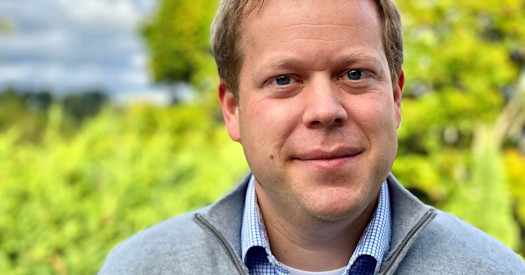
BBI asked presenters, Dr. Ghayda Mirzaa of Seattle Children’s Neurogenetics, Epilepsy Genetics Program; and Dr. Tim Cherry, principal investigator at Seattle Children’s Research Institute in the Center for Developmental Biology and Regenerative Medicine; and session moderator, Dr. Samuel Huang, a medical genetics resident at UW Medicine, to offer their observations of the event.
BBI: What were the highlights of the Pediatric Sequencing Symposium and why?
Dr. Mirzaa: One of the main highlights was that it was a fantastic opportunity to bring together people from diverse scientific and clinical backgrounds within the genomics space to engage, and to showcase their work to the local scientific community in the hopes of facilitating cross-discipline cross talk and collaboration. It was great seeing the excellent diversity and breadth of genomic research undertaken across our three institutions – UW Medicine, Seattle Children’s and Hutch.
Dr. Huang: A highlight for me was the talk by Danny Miller on using targeted long-read sequencing to identify missing disease-causing variants. He is leveraging new technology, growing collaborations all over campus, and producing very exciting results. He has accomplished so much in the span of a few years all while still being a resident! It is extremely impressive.
Dr. Cherry: I loved seeing the mix of clinically oriented and basic research talks. I was especially inspired to see the through line between cutting edge technologies like Fiber-seq, CUT&Tag, and CITE-Seq presented by Andrew Stergachis, Derek Janssens, and April Apfelbaum and the promise of the clinical application of sequencing technologies exemplified by the SeqFirst Team, Hailey Loucks, and Dana Jensen.
BBI: What new information and/or insights did you learn?
Dr. Mirzaa: Several innovative and exciting scientific methods and tools were showcased, including: (1) advances in genome sequencing to identify missing genetic variants across a broad range of disorders; (2) long-read sequencing to identify genetic causes of Mendelian Disorders; and (3) chromatin profiling methods (such as Cut & Run, Cut & Tag) for epigenetic profiling of immunotherapeutic disorders. These tools are quite promising to uncover novel mechanisms of disease.
Dr. Huang: The talks by the Mirzaa group and Bennett group really emphasized the impact of mosaic variants in human disease and the need for specialized techniques to detect those variants.
Dr. Cherry: I really appreciated the candid presentation by Dr. Joon-Ho Yu. As sequencing technologies become more powerful, we have the responsibility to make sure they also become more accessible to groups not currently benefitting from these technologies. Dr. Yu introduced how belonging should be a major goal of efforts to increase diversity, equity, and inclusion, and how approaches like Targeted Universalism can break down structural barriers that prevent some groups from seeing the promises of genome sequencing technology.
BBI: How might you apply that information and those insights in your work?
Dr. Mirzaa: As a neurogeneticist, I believe many of the methods and approaches discussed are poised to be instrumental towards understanding the causes and mechanisms of neurodevelopmental disorders. I am excited by the promise of clinically translating these methods to help families and children with neurogenetic disorders.
Dr. Huang: My own work is in DNA banking and thinking about the mechanisms and infrastructure of storing DNA. This can often serve as a bridge to future testing for individuals with undiagnosed diseases. It is always exciting to hear about new sequencing and testing techniques that could be the payoff for these individuals and make diagnoses. It is motivating to try to optimize systems to help patients to get from point A to B.
Dr. Cherry: Right after the symposium, I emailed with several speakers to see how we might be able to combine our technologies to better understand the potential contribution of non-coding genetic variation to pediatric and adult diseases.


